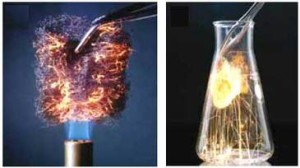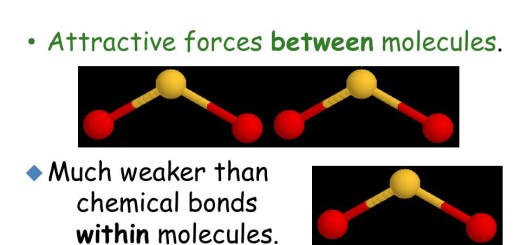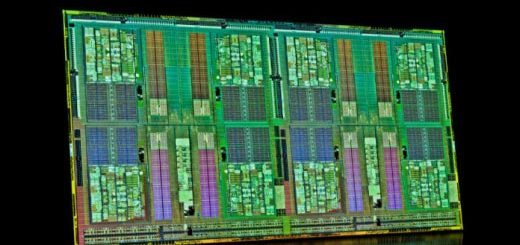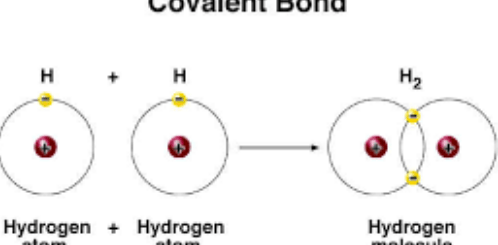The factors affecting the speed of chemical reactions
The chemical reaction speed is the change in the concentration and the resultants in a unit time, The chemical reactions differ in the time that they take to occur, At the end of the reactions, the concentration of reactants and products is constant by passing the time, Some reactions take a very short time ( very fast ) to occur like the fireworks.
Some reactions are comparatively slower to occur like the reaction of oil with caustic soda (NaOH) to form soap, Some reactions are the slowest as they need several months to occur such as rusting of iron, Some reactions take hundreds of years to occur like the reactions inside the Earth to form oil.
Factors affecting the speed of chemical reaction
The factors affecting the speed of the chemical reaction are the nature of the reactants, the reactants concentration, the reaction temperature, and Catalyst, The speed of a chemical reaction can be measured virtually by the disappearance rate of reactants or the rate of appearance of resultants.
The nature of the reactants
The nature of the reactants is related to the kind of bonding in the reactants and the surface area of the reactants.
The kind of bonding in reactions
There are two kinds of compounds (reactants) which are covalent (coordinate) compounds and Ionic compounds, covalent (coordinate) compounds are slow reacting compounds because they do not break up into the ions because the reaction takes place between the molecules, Ionic compounds are the fast reacting compounds because they break up into ions and the reaction takes place between ions.
The surface area of the reactants
The surface area of the reactants exposed to the reaction affects the speed of chemical reaction, Where the reaction occurs with the molecules of the outer layer and does not occur with the molecules inside the bulk of the reactants.
When the reactants decompose, the surface area exposed to the reaction increases, so the speed of the reaction increases, The speed of the chemical reaction increases by increasing the surface area of the reactants exposed to the reaction.
The concentration of the reactants
As the concentration (no. of molecules) of the reactants increases, the number of collisions between the molecules increases, thus the speed of chemical reaction increases, burning of the steal scourers used for cleaning aluminium in a jar fill of oxygen faster than its burning in the atmospheric air because the concentration of oxygen inside the jar is more than in the air, and the speed of chemical reaction increases by increasing the concentration of the reactants.
The temperature of the reaction
The speed (rate) of most chemical reactions increases by increasing the reaction temperature because by increasing the temperature of the reaction, The movement of molecules increases due to the increase of temperature, many collisions between the molecules increases, So, the speed of the reaction increases.
The catalyst
The catalyst is the substance that speeds up the chemical reaction without any changing or being used up, The types of catalyst are the positive catalyst and the negative catalyst, The positive catalyst speeds up the chemical reaction, The negative catalyst is the catalyst that slows down the chemical reaction, Most of the catalysts speed up the chemical reactions (positive catalysts).
Common factors (properties) of catalysts
The catalysts change the speed of the reaction but do not affect either its beginning or stopping, They are used in a few amounts which are often enough to complete the reaction, and there is no chemical changes or decrease in the mass occur to the catalyst before or after the reaction.
The catalysts are bonded to the reactants during the reaction but get separated from them quickly to form the resultants at the end of the reaction, and they decrease the energy needed for the reaction.
Enzymes
The enzymes are the chemical substances that produced by the body of living organism act as the catalysts that increase the speed of biological reactions in the body, The human body contains thousands types of enzymes, Each type has a specific function, without enzymes, man can never breathe, move or digest the food.
The molecule of one enzyme can do its function million times per minute, The biological reactions that occur in the presence of enzymes are more rapid than that without the enzymes thousands or even millions of times.
Catalytic converter
The catalytic converter is the metallic can exists in most modern cars to treat the harmful gases emitted from the engine, It consists of the ceramic cells (similar to the bee cells) covered with a thin layer of a catalytic metal like platinum or palladium, It helps in the treatment of the harmful gases that emitted from the car engine.
Idea of operation
The ceramic cells are similar to bee cells which increase the surface area of the catalytic substance exposed to the current of the emitted gases from the engine so as to economize the use of expensive metals, The catalysts increase the speed of reactions of the treatment of the harmful gases emitted from the engine.
Speed of chemical reactions, Types of catalytic reactions & Catalytic converter
Balanced chemical equations, Law of conservation of matter (mass) & Law of constant ratios














